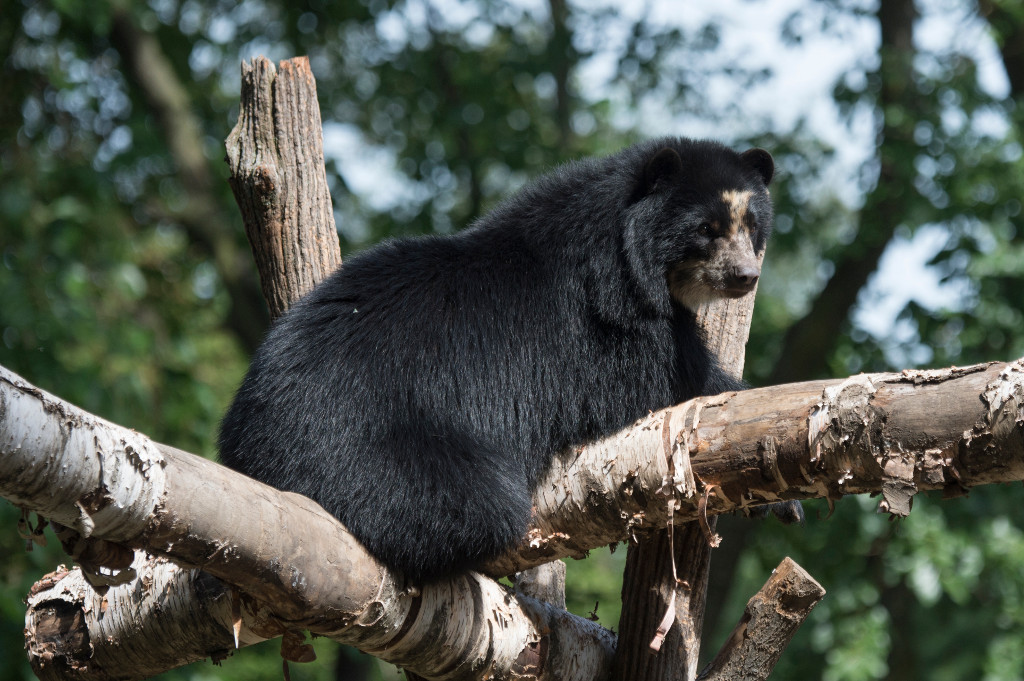Tremarctos ornatus
The Andean bear is the only bear species (Ursidae) found in South America. It is medium-sized and plantigrade, meaning it walks on the soles of its feet. Its fur is generally black, featuring cream-colored markings around its snout, neck, face, and chest, which are unique to each individual. There is sexual dimorphism in this species, with males being nearly three times larger than females.
The Andean bear's range extends through Venezuela, Colombia, Ecuador, Peru, Bolivia, and northern Argentina, following the Andes mountain range. At lower altitudes, the species can be found in both wet and dry ecosystems and across mountainous ecosystems, including sub-Andean and Andean forests, páramos, and punas, from 200 to 4,000 meters of elevation.
This bear plays a key ecological role in the natural regeneration of the forests it inhabits. Thanks to its size and climbing habits, it creates gaps in the forest canopy, allowing sunlight to reach the forest floor and trigger seedling germination. Additionally, due to its omnivorous diet, the Andean bear consumes around 300 plant species, helping seed dispersal across its extensive home range.
 Foto: Julie Larsen Maher / WCS
Foto: Julie Larsen Maher / WCS
Currently, the Andean bear is classified as a Vulnerable species on the Red List of the International Union for Conservation of Nature (IUCN) due to the ongoing loss of its natural habitats, hunting, interactions with human communities, and ecosystem changes driven by climate change.
Since 2016, the public-private alliance Conservamos la Vida — comprising Parques Nacionales Naturales de Colombia, Fundación Grupo Argos, Corporación Autónoma Regional del Valle del Cauca, Fundación Sumurfitt Kappa Colombia and WCS Colombia — has been working in the Western and Central Andes of Colombia alongside rural communities for the conservation of the species and its habitats.
Thanks to this program, 92 conservation agreements have been signed, preserving 4,857 hectares of Andean forests and páramos.
Translated with AI support